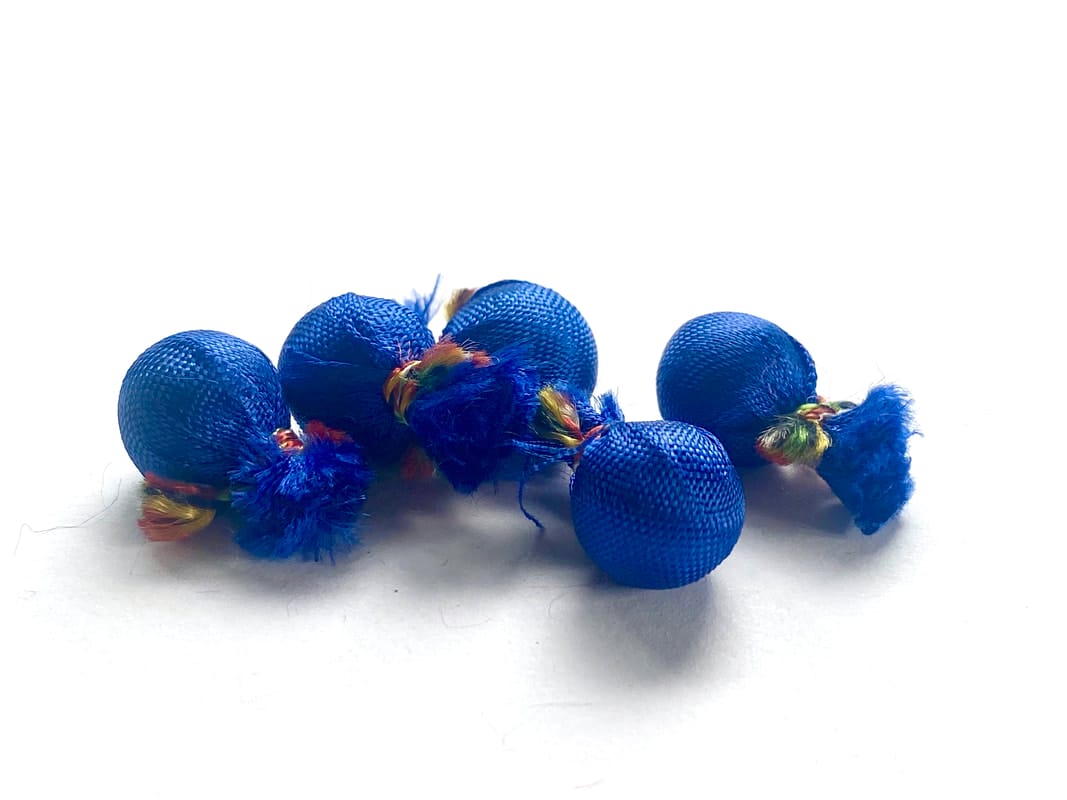 Rin chen ratna bsam ‘phel རིན་ཆེན་ རཏ་ན་ བསམ་འཕེལ་
Rin chen ratna bsam ‘phel རིན་ཆེན་ རཏ་ན་ བསམ་འཕེལ་Or, Ratna bsam ‘phel རཏ་ན་ བསམ་འཕེལ་
Or, Mu tig bdun chu མུ་ཏིག་ བདུན་ཅུ་
Rin Chen Ratna Samphel
Precious Wish Fulfilling Jewel
Or, Pearl 70
Tradition:
Tibetan
Source / Author:
Based on the formula by O rgyan pa Rinchen dpal (1229-1309)
Herb NameMu tig (Pearl)Byu ru (Red Coral) Gzi khra men (varigated Agate) Gzi dkar (White Agate) Gzi dmar (Red Agate) Ma na ho (Cornelian) Yang tri (Jade) Margad (Emerald) Mu men (Lapis Lazuli) Gyu (Turquoise) Zhu mig (type of Chalcedony) Nal (Ruby) Khar thal (Bronze Bhasma) lcags thal (Iron Bhasma) Gser thal (Gold Bhasma) Dngul thal (Silver Bhasma) Zangs thal (Copper Bhasma) Zha thal (Sulphur?) Gsh’a thal (Tin Bhasma) Rag thal (Brass Bhasma) Ti tsha’i thal ba (Zinc Bhasma) Khams bdun thal ba Lhang tsher thal ba (Mica Bhasma) Cu gang (Tabasheer) Smyug cu gang (Tabasheer) Gur gum (Safflower) Li shi (Clove) Dza ti (Nutmeg) Sug smel (Cardamon) Ka ko la (Amomum) Zi ra dkar po (Cumin) Zi ra nag po (Nigella) Pi pi ling (Long Pepper) Shing tsha (Cinnamon) A Ru Ra (Chebula) Ba Ru (Belleric) Shyu ru (Emblic) Ar nag (Aloeswood) Tsan dkar (White Sandal) Tsan dmar (Red Sandal) Spos dkar (Frankincense) Thal rdor (Cassia seed) So ma ra dza (Psoralea) Sga skya (Galangal) Gul nag (Myrrh) Sdig srin (Crab) Sdig nag (Scorpion) Rgya tshva (Sal ammoniac) Nya phyis (Mother of Pearl) Bri ta sa ‘dzin (Wild Strawberry) Gz’a bdud dkar po (White) seeds Gz’a bdud dkar po (Black) seeds Klu bdud rdo rje (Codonopsis) Lcam ‘bru (Mallow seed) Te lo’i sha (animal medicine) * Ri bong snying (Rabbit heart) Brong khrag (Yak heart) Shing mngar (Licorice) Skyu ru’i khanda (Candied Emblic) Bse ru (Rhinoceros horn) Btso thal (Processed Mercury) Kha gur (Saffron) Gi wan (Bezoar) ** Gla rtsi (Musk) ** Artificial Gi wan (Bezoar) |
|
* Te lo’i sha–some sources have stated it is a Bird, other a small rodent-like animal. In any case, the whole dried carcass is used.
** Synthetic Bezoar and Musk (or Musk substitutes) are typically used today.
Preparation:
Powder and form Pills.
Function:
Calms the Mind and Nerves, Settles Wind, Opens the Orifices, Opens the Channels, Moves the Blood, Harmonizes Qi and Blood
Use:
“All types of Nerve disease”
“Diseases of the White Canals [Nerves] and Blood vessels that are difficult to treat“
“Defeats any Poison”
1. Antidote to all Poisons: Food, Plant, Insect, Animal and Chemical Poisons
2. Swellings, Stabbing Pain due to Blood stasis
3. disorders caused after Injuries or Bruising
4. Headaches, Chronic or Stubborn or Stabbing Headaches
5. Concussion
6. Cerebral Hemorrhage, Stroke (CVA)
7. Sequele of Stroke: Deviation of Eye and Mouth, Loss of Speech, Slurred Speech, Hemiplegia etc.
8. Trembling or Shaking (Parkinsonism)
9. Numbness
10. Paralysis. Facial Paralysis,. Hemiplegia
11. Rigidity, stiffness, tightening, trembling, impaired mobility, gradual wasting of the limbs
12. Epilepsy
13. Depression
14. Chaotic though, stupefied Consciousness
15. distortion of perception
16. Dumbness
17. Insanity
18. Schizophrenia
19. Loss of Memory
20. Heart disease
21. Hypertension
22. Chronic Lung disease
23. Chronic and obstinate skin diseases including Leprosy
24. Fecal and Urinary Incontinence
25. Ulcers and Tumors
26. Cancer–regarded as useful in Cancer treatment
27. Nourishes Essence; taken in health it is a Health Tonic and Rejuvenative Medicine.
Dose:
1 pill daily for 7 days in severe or acute cases.
1 pill every 3–7 days, to as little as once or twice per month, in long-term treatment.
Cautions:
As for the Precious Pills in general.
Modifications:
See also our page on Tibetan Jewel Pills
It is neutral in nature, and non-toxic. It is traditionally wrapped in dark blue cloth
It neutralizes the effects of all types of poisons, including food, plant, and chemical poisons as well as insect and animal bites. It calms the Mind, Nerves and Spirit, activates capillary circulation, balances Qi and Blood, and revives the Brain and relieves Pain.
1. Ratanasampil is more effective than flunarizine in relieving migraine.
2. The Neuroprotective Effects of Ratanasampil on Oxidative Stress-Mediated Neuronal Damage in Human Neuronal SH-SY5Y Cells.
3. The study of chemical components in Qishiwei Zhenzhu pills and its anti-apoptotic mechanism in cerebral ischemic based on LC-MS and network pharmacology.
4. [Safety evaluation of Tibetan medicine Qishiwei Zhenzhu Pills based on serum pharmacochemistry and network pharmacology].
5. Exploring the role of Tibetan medicinal formula Qishiwei Zhenzhu Pills (Ranasampel) against diabetes mellitus-linked cognitive impairment of db/db mice through serum pharmacochemistry and microarray data analysis.
6. Traditional medicine in China for ischemic stroke: bioactive components, pharmacology, and mechanisms.
7. Protective effect and mechanism of Qishiwei Zhenzhu pills on cerebral ischemia-reperfusion injury via blood-brain barrier and metabonomics.
8. Determination of 18 Trace Elements in 10 Batches of the Tibetan Medicine Qishiwei Zhenzhu Pills by Direct Inductively Coupled Plasma-Mass Spectrometry.
Back To PILLS
Back to FORMULAS
How to Modify a Formula
Substitutes
Weights & Measures
